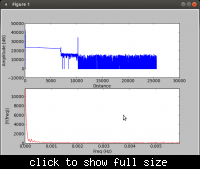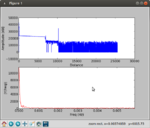tarcisioGR
Newbie level 4
Hello there.
I want to analyse the spectrum of signal which is in log scale. I guess it should be linearized, that is, diveded by 20 and then raise 10 to the power of it, before input it in an FFT implementation. Is that correct? Maybe the answer could be "depends", but I really want to know what you people use to do when analysing dB scaled signals...
Ok, if the answer is yes, there's the problem of overflow when raising 10 to the power of a signal whose amplitude is, say, about 15000. Thus I want to know if there's some property about Fourier transform helping on this. For instance: "the transform of the log is the log of the transform", or something else... (I know this property does not hold, but maybe something similar could help).
It's really a newbie question, but I'm just a beginner, sorry for that.
Tarcísio
I want to analyse the spectrum of signal which is in log scale. I guess it should be linearized, that is, diveded by 20 and then raise 10 to the power of it, before input it in an FFT implementation. Is that correct? Maybe the answer could be "depends", but I really want to know what you people use to do when analysing dB scaled signals...
Ok, if the answer is yes, there's the problem of overflow when raising 10 to the power of a signal whose amplitude is, say, about 15000. Thus I want to know if there's some property about Fourier transform helping on this. For instance: "the transform of the log is the log of the transform", or something else... (I know this property does not hold, but maybe something similar could help).
It's really a newbie question, but I'm just a beginner, sorry for that.
Tarcísio

